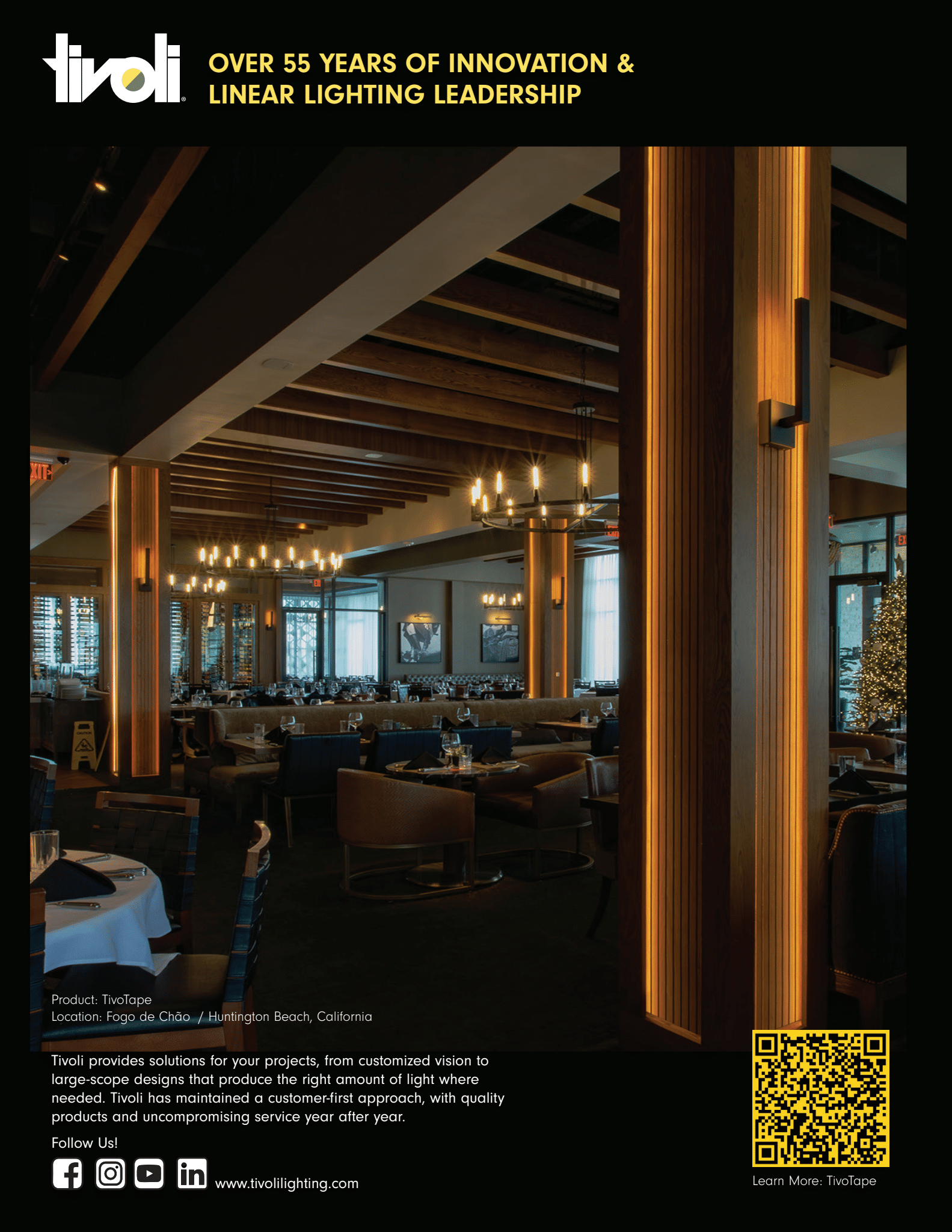
5 minute read
Up Close with Jean Sundin
By Shirley Coyle, LC
Growing up in a family that moved around a lot - from Michigan to Ohio, on to Massachusetts and finally to Virgina, Jean Sundin experienced a real life introduction to architecture, interior design and spaces. “Now we live in a very visual society, but back in the day, we didn’t have this Instagram kind of society to inspire us.”
At the age of 8, Jean’s aunt and uncle built a home that really inspired her: “Seeing a door that slid into the wall, a living room with a step down…I’d never seen these things, but I started imagining and scribbling little floor plans.”
Jean graduated in Interior Design, and it was not the single lighting course in the program that pulled her into lighting. “The course we had on lighting certainly didn’t inspire me – it was awful – all about room cavity ratios and troffers.”
Instead, one day the class visited some showrooms, and as Jean walked past a showroom, “The lighting changed from general lighting on a dining room table to a spotlight on a vase of flowers! I thought, oh my goodness – everything was transformed – I need to know more about lighting to be a better interior designer.”
Wanting to live and work in New York, Jean excitedly submitted her student portfolio to be one of the early participants in the IALD intern program. After completing that program, she moved to Washington, D.C. to work for the visionary lighting consultant Claude R. Engle, a founding member of IALD. “It was an amazing start to things, amazing projects – working on the Grand Louvre Pyramid [the centerpiece of the Louvre, designed by architect I.M. Pei], and on Philip Johnson’s Glass House - you can’t get a better start than that. We had to draw everything by hand–even cut sheets, so I learned a lot!”
The next leap in Jean’s career was the establishment of a new lighting design studio in New York City, Office for Visual Interaction, Inc, (OVI),which she founded along with Enrique Peiniger. She described their experience with an early project, the Scottish Parliament, which foreshadowed the international work for which their studio would become known, saying, “The intensity and magnitude (8 buildings)was a challenge, and also the construction was happening as we were designing the lighting–they were grabbing drawings from the board and going right to build! It was fun to see how much creativity there could be with lighting a government site. We are still doing projects in Scotland."
Always very career-focused, Jean reflected on her success as having happened in a few chapters, with the first chapter being her early days working on very nice projects with Claude and Danielle Engle. Jean sees the second chapter in her success as the setting up of OVI with Enquire, continuing the tradition of international work – building on the momentum from their early project, the Scottish Parliament, and having amazing collaborations over more than twenty-five years with Zaha Hadid Architects.
OVI’s latest collaboration with Zaha Hadid is on Unicorn Island, an island in China with over twenty buildings by the architect. “We’ve been very fortunate from the early days. We have a great team – a very international team, with people from different parts of the world, including Italy, China, Germany, India and elsewhere.”
For the third and most recent chapter of her success, Jean describes the recent inspiring work that OVI was approached to do for New York Power Authority to light “relics” along the Erie Canal – to transform seemingly forgotten structures (lighthouses, dams and lift bridges) as a catalyst to have visitors come to the area, stimulating the economy. “Lighting is always an addition –but this time, it’s the client saying, ‘First, we want to do lighting.’ I love that light transforms space – any kind of transformation, and I’m just in… It’s such a powerful emotional component to the architecture – it’s what keeps me coming back. Just seeing the potential, and thinking, this could be so great!”
Asked for her advice for those coming into the lighting design community, Jean offered, “We’re in this instant reward society –it’s ‘we need the drawings now!’ We used to have a day, time to think. Patience – good things take time. Enjoy the process – just work on it! Give yourself time to learn it, love it, enjoy it! Be a humble expert – you have to sit back and listen. There is always something you can learn from someone else. Architects have so many different backgrounds, a lot to offer – I’ve learned a lot.”
Over the years, Jean has continued to think about what is needed for the next generation of lighting designers. With the reliance on computer software, she feels like some of the basics might be missed. She worked on IALD’s Spec Integrity document and on education. Thinking of the need for foundational basics, she has worked on harmonizing the platform for the fundamentals of architectural lighting, including doing a summit comparing lighting design programs with educators from fifteen countries.
Jean made it clear that while she loves lighting, she likes everything about design – adding that she is a certified Feng Shui professional. Asked how that might impact her lighting design, Jean noted, “I feel like it is an extension of architecture and interior design, because it is about space, and energy of the space; it’s not decorative. There are a lot of calculations involved. It has to do with the geographic location of the project, compass readings, dates of construction – a lot is involved to make an energy map. It makes me more sensitive to the space and why something may or may not be working. It’s all about balance.”
Adding to the balance at her home are her two little cats, Silver and Goldie – rescued and loved by the globe-trotting Jean Sundin.











